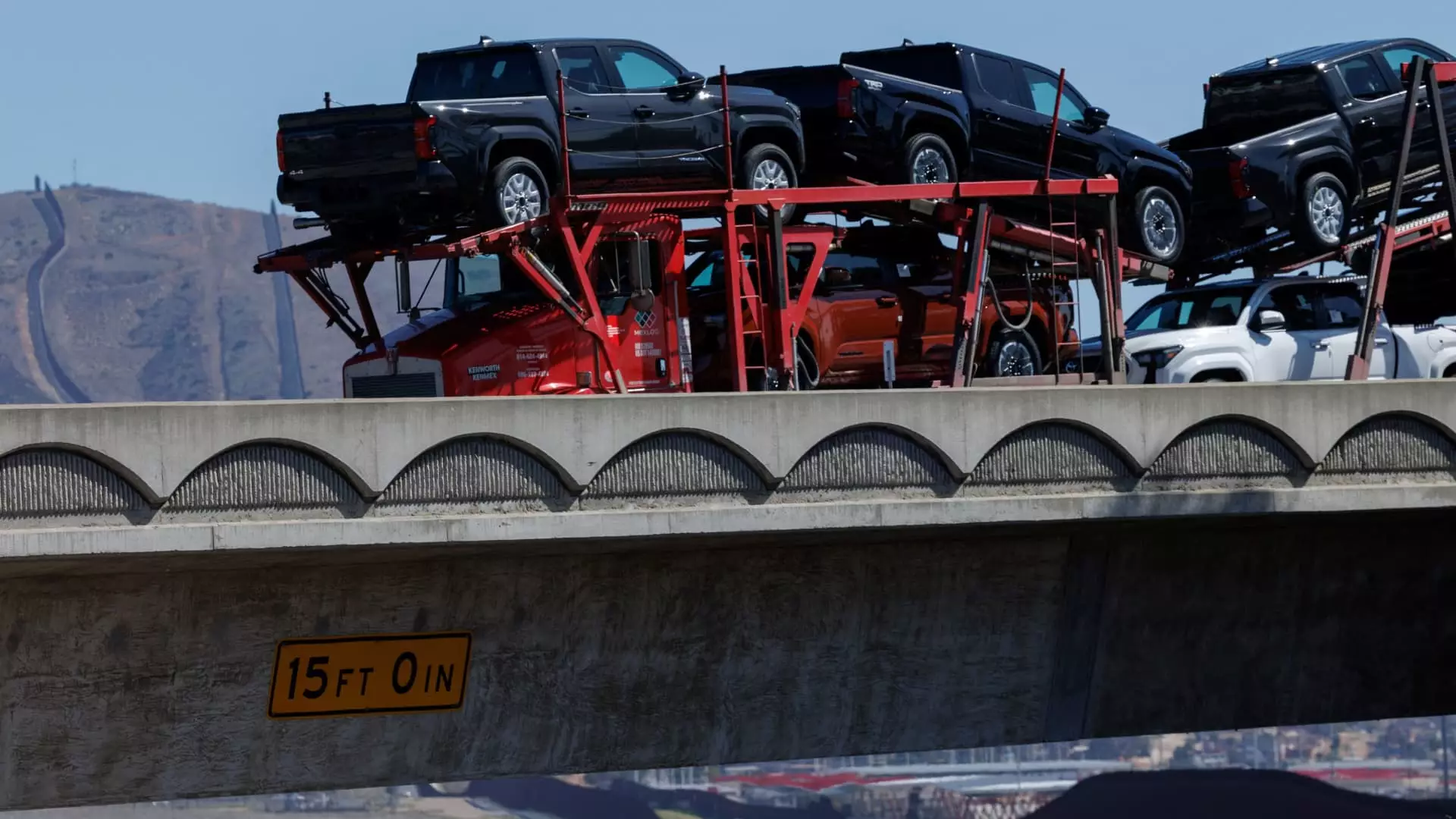The recent announcement by President Donald Trump regarding a 25% tariff on all non-American-made vehicles and specific auto parts has sent tremors through the automotive industry. This bold move, aiming to bolster domestic manufacturing, has raised concerns and sparked debate regarding its potential repercussions. What is often framed as a patriotic endeavor could inadvertently jeopardize the very blue-collar jobs it seeks to protect.
In the wake of Trump’s tariffs, major auto manufacturers like General Motors, Ford, and Stellantis have witnessed significant drops in stock prices, with GM plummeting nearly 8% in morning trading. This stark contrast, however, has not impacted Tesla, whose shares surged by almost 5%. Such disparities highlight not only the immediate market volatility but also the varying degrees of exposure different automakers face, particularly in terms of their manufacturing locations. Analysts from Deutsche Bank noted that Ford, while somewhat shielded, still has its vulnerabilities, especially concerning imported engines. In contrast, GM, with substantial operations in Mexico, has much to lose.
Impacts on Production and Pricing
Though rooted in a well-meaning desire to stimulate American industry, the 25% tariff may have the opposite effect on consumer costs. Goldman Sachs analysts estimate the tariffs could hike the price of imported cars by anywhere between $5,000 to $15,000. Even for domestically assembled vehicles that rely heavily on foreign parts—approximately 50% on average—the price could increase by an additional $3,000 to $8,000. This could create a significant burden on the middle class, the very demographic that the tariffs aim to uplift.
It is also pertinent to consider the complexity of global supply chains in the automotive sector. With average vehicles comprising around 20,000 parts from as many as 120 different countries, the expectation that domestic manufacturers can effortlessly pivot to entirely local production is overly simplistic. The reliance on imported components is deeply integrated into the production process, and tariffs threaten to disrupt an already delicate balance.
UAW: A Poky Response to a Complicated Issue
The United Auto Workers (UAW) have expressed elation at the prospect of tariffs, framing them as a monumental step for American autoworkers and blue-collar communities. UAW President Shawn Fain suggests that it is now the responsibility of automakers to prioritize creating good union jobs in the U.S. However, this sentiment is a reflection of hope rather than a strategic blueprint for success. The tariffs may protect some jobs in the short term, but businesses often operate with economies of scale in mind. Faced with increasing production costs, companies may resort to layoffs or relocations to maintain profitability—actions that most certainly do not align with protecting the American worker.
Additionally, the complexities involving compliance with the United States-Mexico-Canada Agreement and the nuances of what constitutes “U.S.-made” can lead to further confusion and inconsistency in enforcement. As manufacturers grapple with evolving trade rules, ambiguity may ultimately worsen the situation rather than offering clarity.
The Path Forward: Balancing Patriotism With Pragmatism
Building a robust American automotive sector is undoubtedly a goal worth pursuing, but the methods employed must be scrutinized. Tariffs might initially seem like a swift solution, yet their long-term consequences could drown out any immediate gains. A more nuanced approach is required—one that combines industry incentives to innovate and expand domestic capabilities without strangling consumer choice or pushing prices beyond reach.
Ideally, policymakers should focus on developing and implementing strategies that foster sustainable growth within the automotive industry. This involvement could include tax breaks or grants for automakers committed to domestic production, establishing partnerships with educational institutions to enhance technical training, and investing in advanced manufacturing processes that can maintain competitiveness on a global scale.
While patriotism drives the desire to bolster American-made products, the solution rests not merely in imposing tariffs but in constructing an ecosystem where American automobiles can thrive without creating economic burdens that could stifle the marketplace. The challenge now lies in how the administration navigates this intricate web of interests and consequences.

